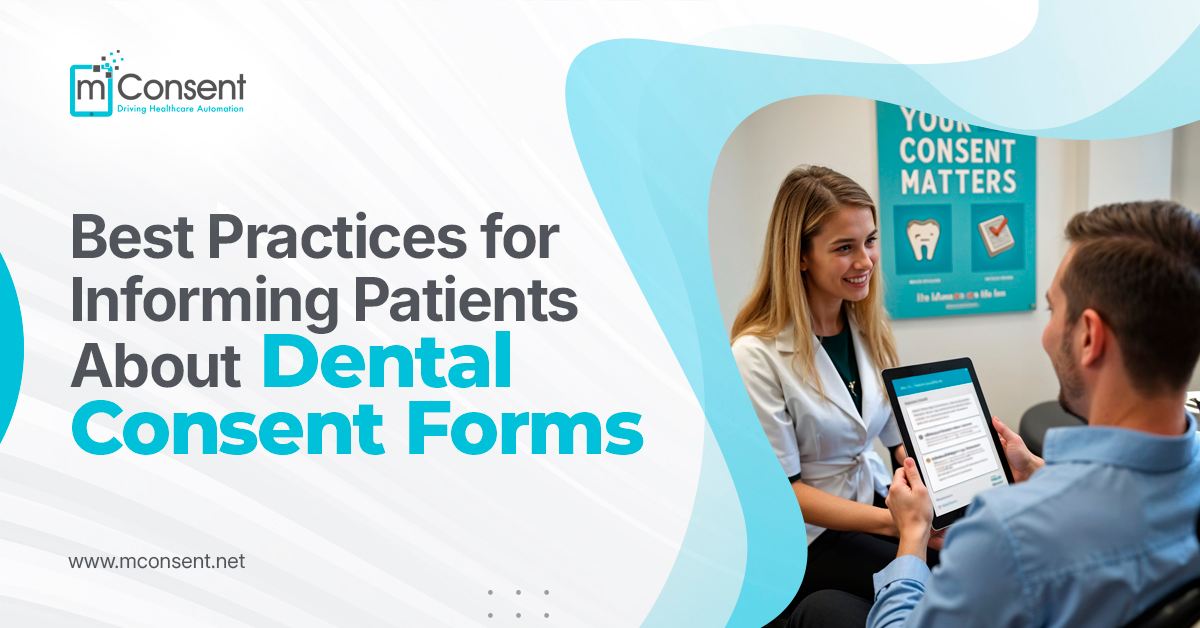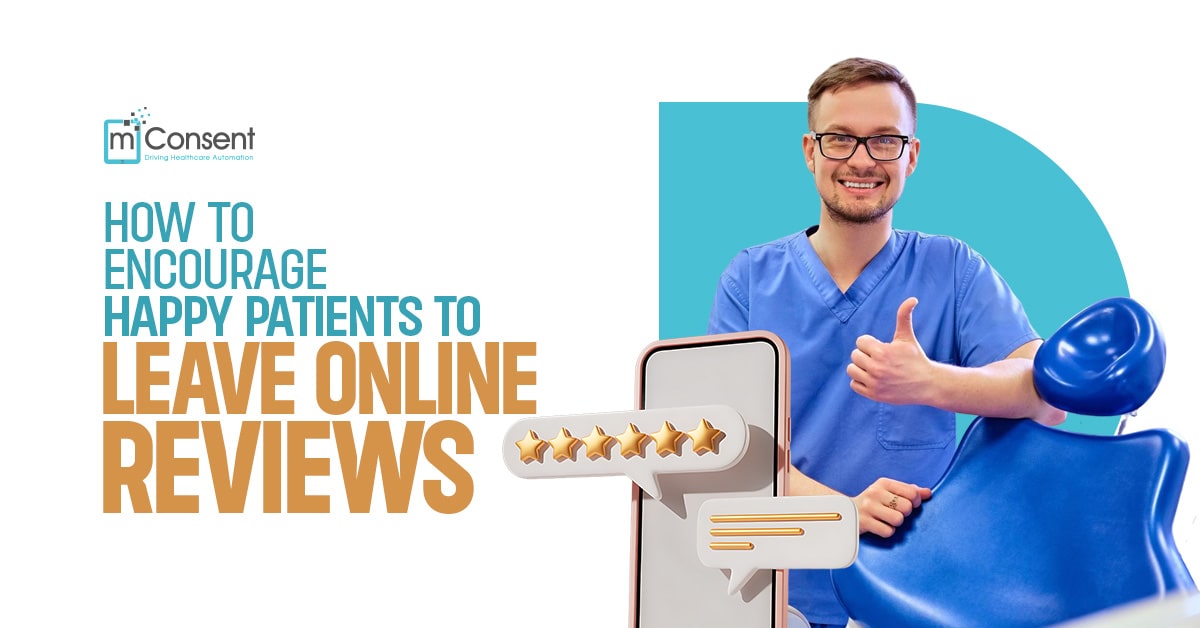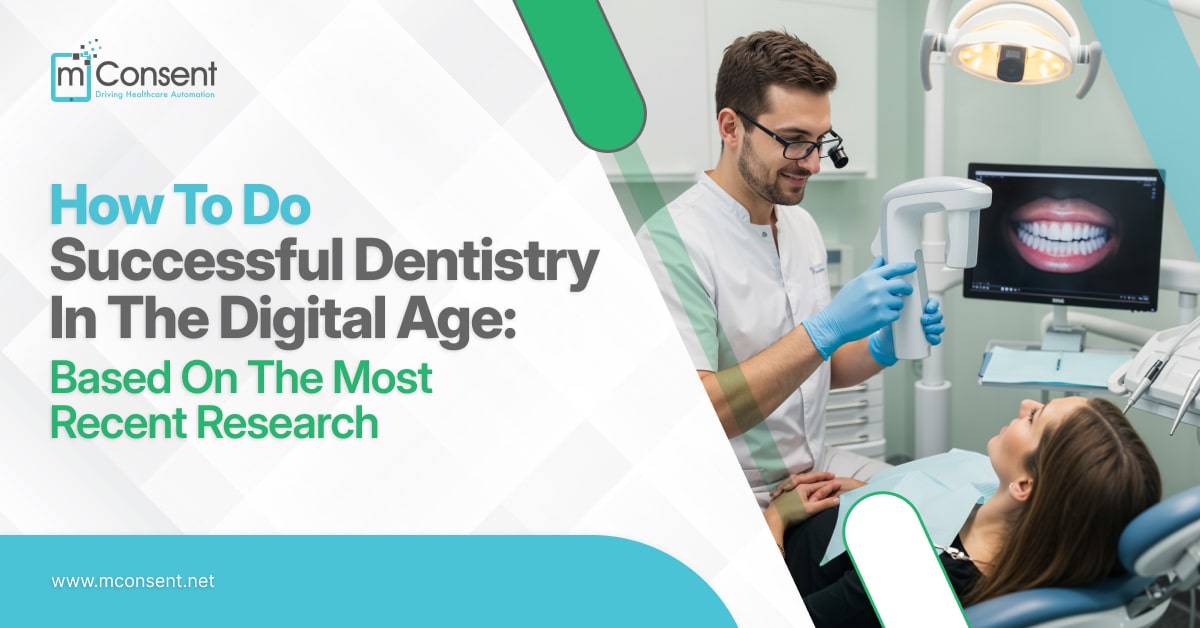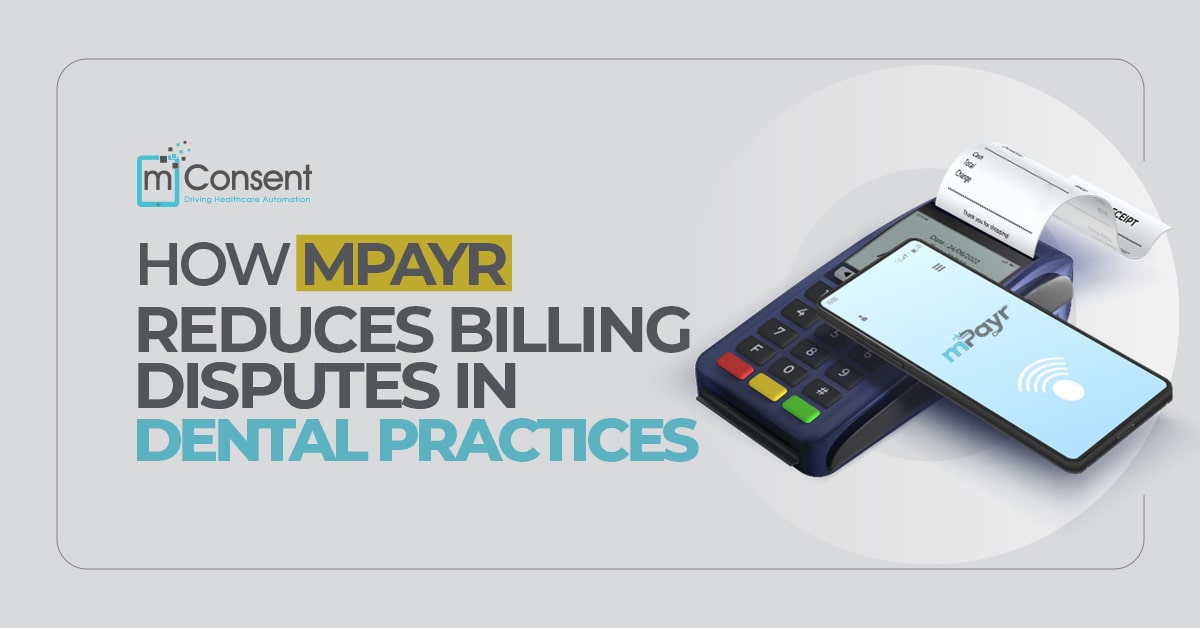In a world where patients often feel like just another name on a clipboard, dental practices have a unique opportunity to change that experience. One simple but powerful way? How do you handle consent forms?
While some may see dental consent forms as mere paperwork, they’re actually a cornerstone of respectful, ethical care. Informed consent isn’t just about legality it’s about listening, informing, and connecting. When done right, it builds trust and transforms the patient experience.
This article discusses the best practices for presenting dental consent forms in ways that help patients feel heard, safe, and empowered while protecting your practice.
Why Informed Consent Is More Than Just a Signature
For many patients, especially those nervous about dental visits, signing a consent form can feel like a formality one more piece of paper to complete before the real appointment begins. However, for healthcare providers, consent represents something much more profound.
It’s a mutual agreement. The patient says, “Yes, I understand what’s going to happen, and I’m okay with it.” The provider says, “Here’s everything you need to know to make that choice.”
When patients don’t fully understand what they’re signing, it can lead to confusion, fear, or even resentment later. Worse, it opens the door to legal complications that could have been easily avoided.
Good consent practices show patients that their comfort and understanding matter. They’re not being rushed they’re being respected.
Best Practices for Communicating Dental Consent
Use Clear, Simple Language
Let’s face it most patients aren’t fluent in dental terminology. Words like “extraction,” “anesthesia,” or “periodontal” may be second nature to your staff, but they can be overwhelming or confusing to patients.
The fix? Speak in plain English.
Instead of: “We’ll perform a gingivectomy under local anesthesia using a laser.”
Try: “We’ll gently remove some gum tissue using a laser tool. You’ll be awake, but we’ll numb the area so you won’t feel pain.”
Break down the steps. Use everyday language. Imagine explaining it to a friend who’s never been to a dentist before, and start from there.
Provide Digital Consent Forms in Advance
When a patient is sitting in your waiting room, possibly anxious or short on time, it’s not the best moment to process a two-page legal document.
Give them time to breathe. With platforms like mConsent, you can send digital consent forms via email or text before their appointment. This allows them to:
- Read at their own pace
- Ask family members or caregivers for support
- Note down questions to ask you later
Digital consent also reduces pressure, giving patients a sense of control, which is especially important for nervous or first-time visitors.
Encourage Questions and Conversation
One of the most meaningful things you can say to a patient is: “Do you have any questions about this?”
Make it clear that asking questions is not only okay but expected. Don’t just hand over a form and move on. Instead, sit with them, look them in the eye, and create space for conversation.
For patients who seem hesitant, try prompts like:
- “Was any part of that unclear?”
- “Would you like me to go over the risks again?”
- “Want to hear about what other people have experienced with this treatment?”
When patients feel safe asking questions, they feel respected and more in control of their care.
Use Visual Aids to Make it Real
Sometimes words alone aren’t enough. Dental work can be hard to visualize or imagine, especially for treatments that patients can’t see inside the mouth.
Visuals help.
- Diagrams showing the procedure
- Before/after photos (with permission)
- Short videos explaining what to expect
These tools help demystify the process, especially for visual learners or those with lower health literacy. mConsent allows integrating such tools into the digital consent workflow so that patients can see and understand simultaneously.
Document the Conversation Thoughtfully
It’s not enough to have the conversation; you must also document it.
With mConsent’s digital intake and consent tools, this is simple. You can:
- Add notes about specific concerns the patient raised
- Record that verbal explanations were provided
- Include acknowledgment checkboxes confirming understanding
This documentation shows that you did your due diligence legally and ethically.
How mConsent Makes Consent Simpler, Smarter, and Safer
In today’s fast-paced world, efficiency and empathy must work together. mConsent offers digital solutions that do just that, making the consent process easier for both patients and providers.
Here’s how mConsent helps elevate the experience:
✅ Pre-Filled Patient Info – Patients don’t have to re-enter details you already have.
✅ HIPAA-Compliant Storage – Security and privacy are built-in.
✅ Remote Access – Send forms via text or email.
✅ Self Check-in Kiosks & iPad App – Offer consent forms at check-in.
✅ Customization – Tailor forms to fit procedures and patient needs.
✅ Streamlined Communication – Follow-up questions answered through 2-way texting.
Going Beyond Consent: Building Trust with Every Step
At its heart, informed consent is about trust. It’s about showing your patients that:
- Their voice matters
- Their choices are respected
- You’re here to guide, not just treat
You show patients they're partners in their care by taking small, intentional steps like offering digital forms early, using simple language, and inviting questions.
And when patients feel heard and informed, they’re more likely to:
- Stick with treatment plans
- Show up for follow-ups
- Recommend your practice to others
A Real Patient Story
Let’s imagine Anna, a first-time patient at your clinic. She’s been nervous about getting a root canal and dreads the paperwork. But before her visit, she received a text from your office with a link to her consent form powered by mConsent.
She opens it while sipping coffee at home, watches a quick video explaining the procedure, and checks a box that says, “I’d like to discuss alternatives.”
When Anna arrives, she’s greeted kindly, and her concerns are addressed clearly. She signs digitally on an iPad and feels reassured, seen, and supported.
That’s not just good consent that’s good care.
Final Thoughts
Dental consent forms are more than a checkbox. They’re an opportunity to connect with your patients, make them feel safe, and show that their voice truly matters.
Adopting these best practices and integrating digital tools like mConsent can transform a routine step into a meaningful experience. One that builds loyalty, trust, and long-term relationships.
Let consent be more than a form. Let it be a conversation.
Let that conversation be the start of something better for your patients, your team, and your entire practice.
Ready to simplify consent and elevate your patient experience? Explore mConsent’s Dental Patient Engagement Software today. From digital forms and self-check-ins to seamless communication and payment solutions, mConsent helps you care better, faster, and smarter.
""

![HIPAA Release Form – All you Need to Know [Instant Download]](https://mconsent.net/wp-content/uploads/2021/09/HIPAA-Release-Form-All-you-Need-to-Know-Free-Release-Form.jpg)















